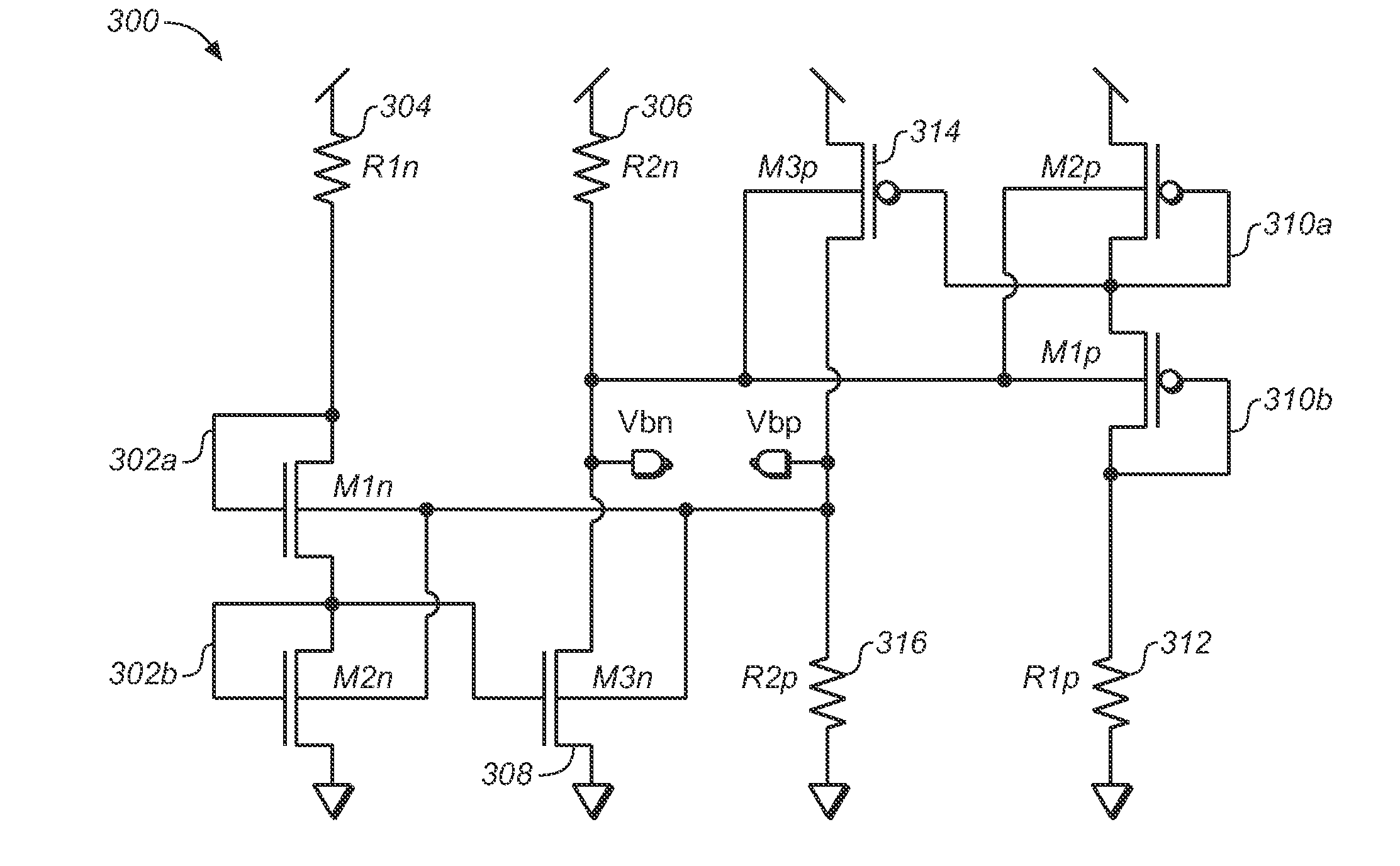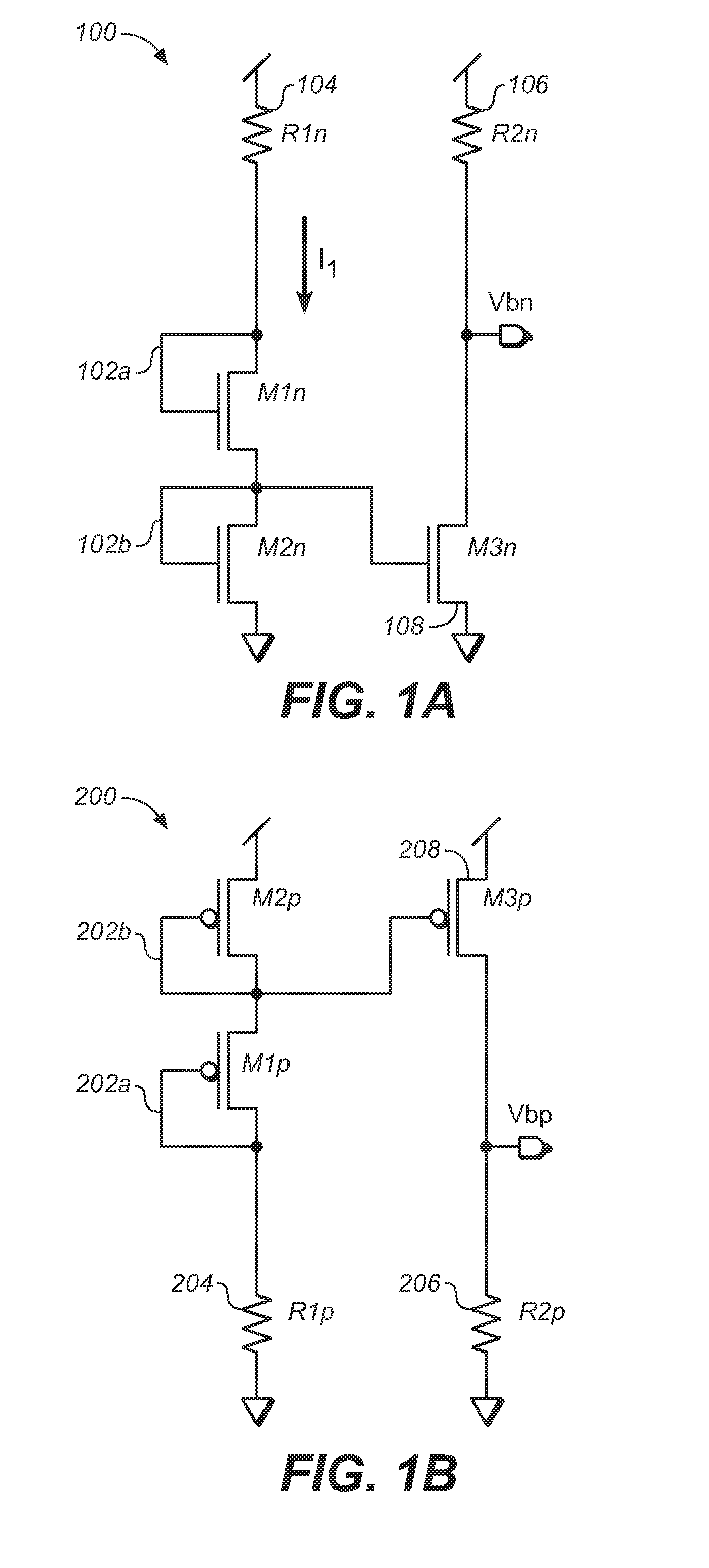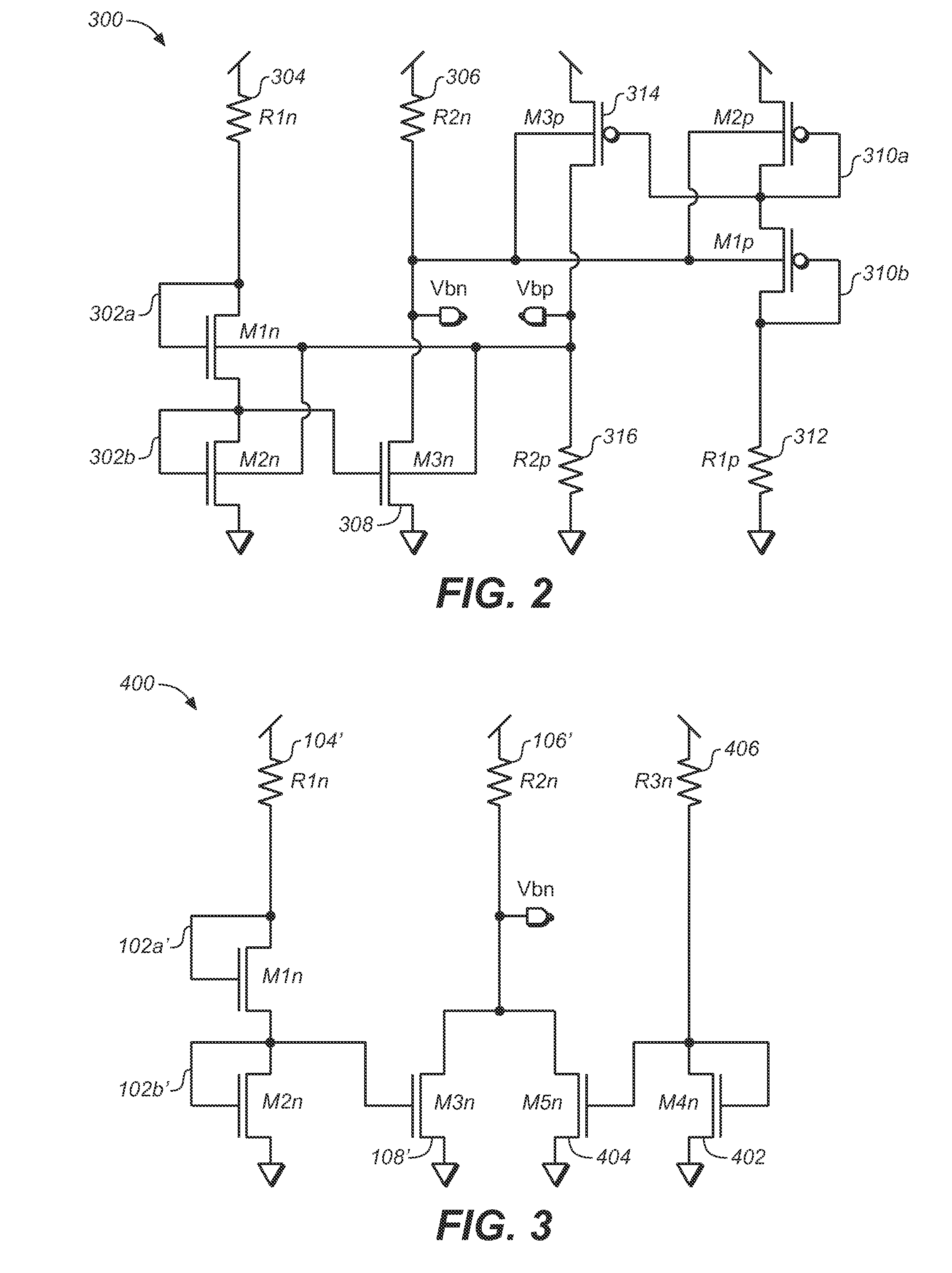Bias circuit for a MOS device
a bias circuit and mos technology, applied in the field of bias circuits, can solve the problems of affecting the performance of the circuit, reducing the performance of many cmos circuits, and excessive power dissipation, so as to reduce the overall variation, improve the optimization of the circuit, and effectively adjust the threshold voltage
- Summary
- Abstract
- Description
- Claims
- Application Information
AI Technical Summary
Benefits of technology
Problems solved by technology
Method used
Image
Examples
second embodiment
[0022]FIG. 2 is a bias circuit 300 in which the generated bias is being used in the circuit itself to bias the body of both NMOS and PMOS devices. In this embodiment, resistor 304 is coupled to diode connected transistors 302a and 302b, which are in turn, coupled to diode connected transistors 308 and resistor 306. Diode connected transistor 308 is coupled to resistor 316, which is coupled to ground. Resistor 306 is coupled to diode connected transistor 314, which is then coupled to transistor 310a and 310b. Transistors 310a and 310b are coupled to resistor 312, which is coupled to ground.
[0023]In this embodiment, the bias voltage, Vbp, is applied to the NMOS devices and the bias voltage, Vbn, is applied to the PMOS devices. Instead of compensating for pressure, voltage and temperature variations, the bias voltage increases the sensitivity to process, voltage and temperature variations and extends the range of the bias outputs, Vbp and Vbn, which may be beneficial in certain applica...
third embodiment
[0024]Finally, bias voltages with an arbitrary sensitivity to process, voltage and temperature variations can be generated by combining the outputs of multiple versions of the basic circuit. One such example is shown in FIG. 3. FIG. 3 is a schematic of only the NMOS portion of a substrate bias circuit 400. The left half of the circuit replicates that in FIG. 1. The right half is similar but contains a single diode-connected MOS device 402. MOS device 402 is connected to the diode connected transistor 402 which is then connected to resistor 406 and to ground. The MOS diode connected device 402 will have less temperature sensitivity than the stacked diodes 102a′ and 102b′. By adjusting the resistor values 104′, 106′ and 406 and the relative weights of current mirrors 108′ and 404′, an arbitrary sensitivity can be optimized between the two extremes. A complementary PMOS version can also be constructed utilizing PMOS devices.
[0025]Accordingly, by using a bias circuit in accordance with ...
PUM
 Login to View More
Login to View More Abstract
Description
Claims
Application Information
 Login to View More
Login to View More - R&D
- Intellectual Property
- Life Sciences
- Materials
- Tech Scout
- Unparalleled Data Quality
- Higher Quality Content
- 60% Fewer Hallucinations
Browse by: Latest US Patents, China's latest patents, Technical Efficacy Thesaurus, Application Domain, Technology Topic, Popular Technical Reports.
© 2025 PatSnap. All rights reserved.Legal|Privacy policy|Modern Slavery Act Transparency Statement|Sitemap|About US| Contact US: help@patsnap.com



